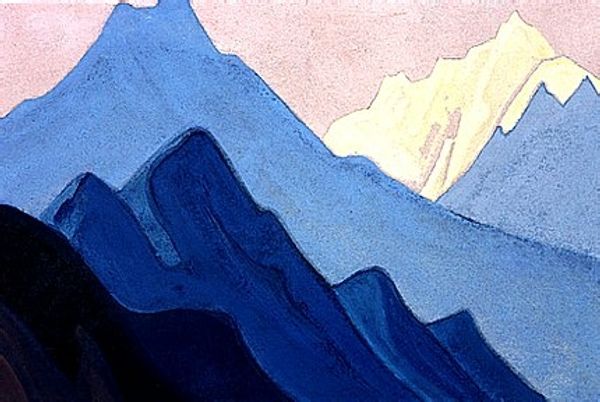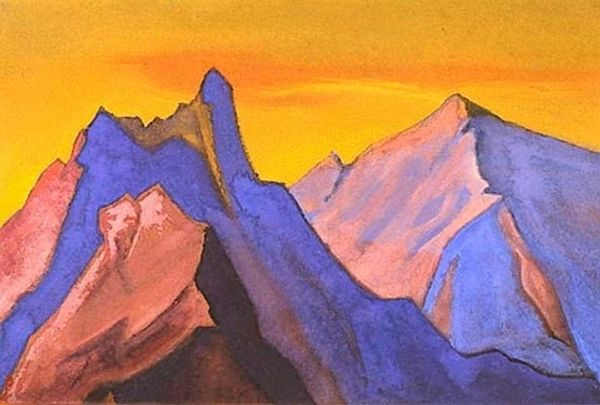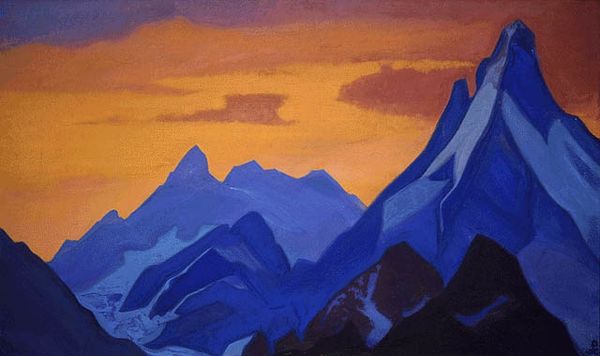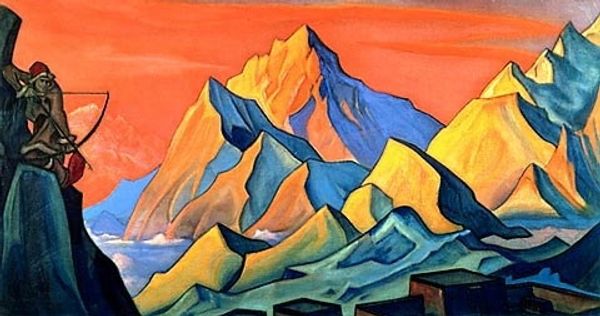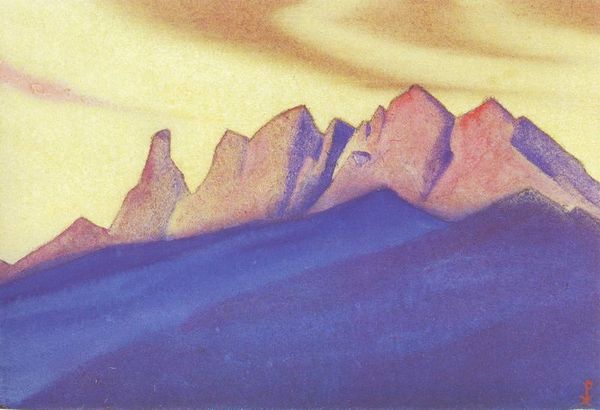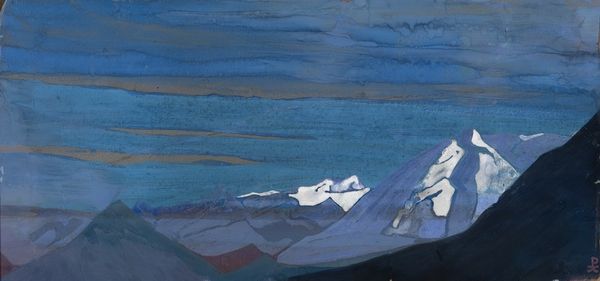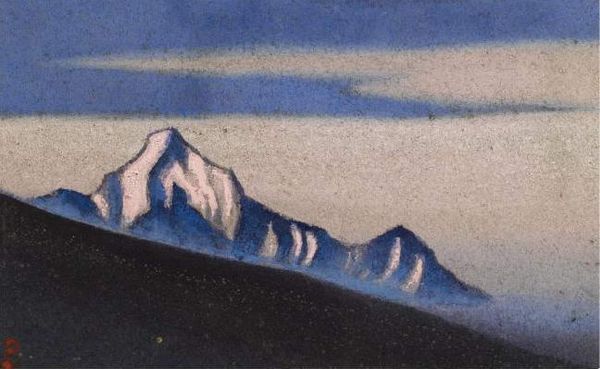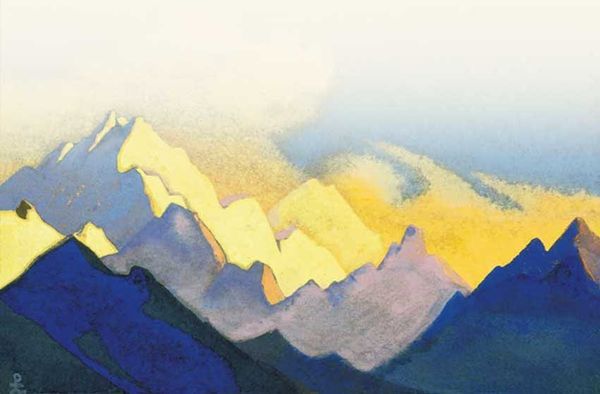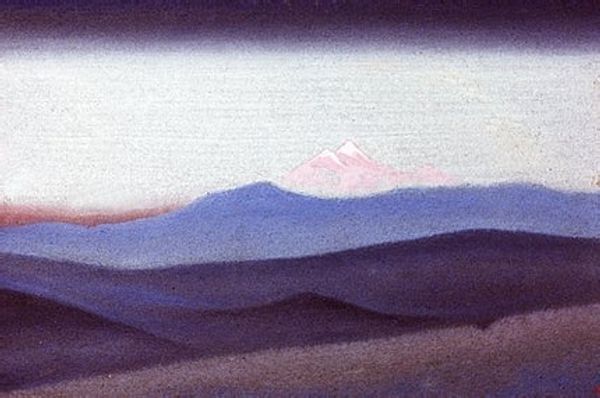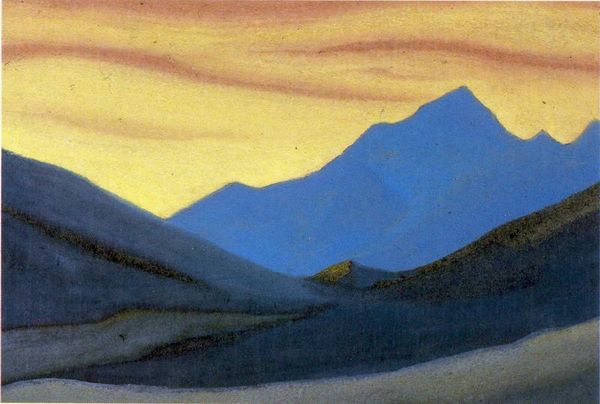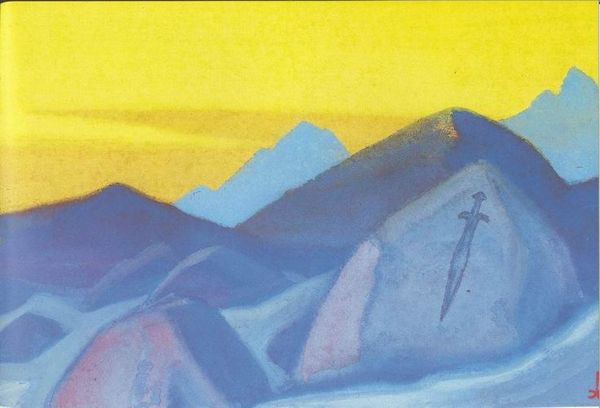
Copyright: Public domain
Editor: This is "Calling," painted by Nicholas Roerich in 1944, using tempera and oil paints. The landscape is dominated by cool blues, and the central figure seems to be calling out across this vast, imposing landscape. It feels almost… desperate? What do you see in this piece? Curator: Desperate is an interesting word. For me, Roerich's work always has to be situated within its historical context. 1944 - think about what that signifies. World War II raged on, and Roerich, deeply invested in Eastern philosophies and Theosophy, paints this. What call is being made here, and to whom? Editor: Well, it's definitely evocative of a remote, spiritual place. The person almost seems like a lone messenger... maybe calling to some higher power or… some sort of revolution? Curator: Precisely! The "call" can be interpreted as a desperate plea for peace, for a return to spiritual values in a world consumed by violence. Roerich believed in the power of art to inspire social change, and I read this painting as an activist statement, linking the macro-level violence of war to an individual's plea. Note the simplified forms and symbolic use of color, all serving to emphasize the universality and urgency of the message. What’s interesting is the subject looks toward snow-capped mountains, pristine, untouched, suggesting a contrast with a tarnished world. Do you think Roerich saw this purity as a way forward? Editor: I do. The call becomes not just about the present horror, but towards some future ideal. Thanks. I hadn't considered how strongly Roerich's personal philosophy informs the socio-political context of his artwork. Curator: It’s important to remember the intersectional nature of art – how the personal, political, and spiritual often collide to create deeper meaning.
Comments
No comments
Be the first to comment and join the conversation on the ultimate creative platform.
